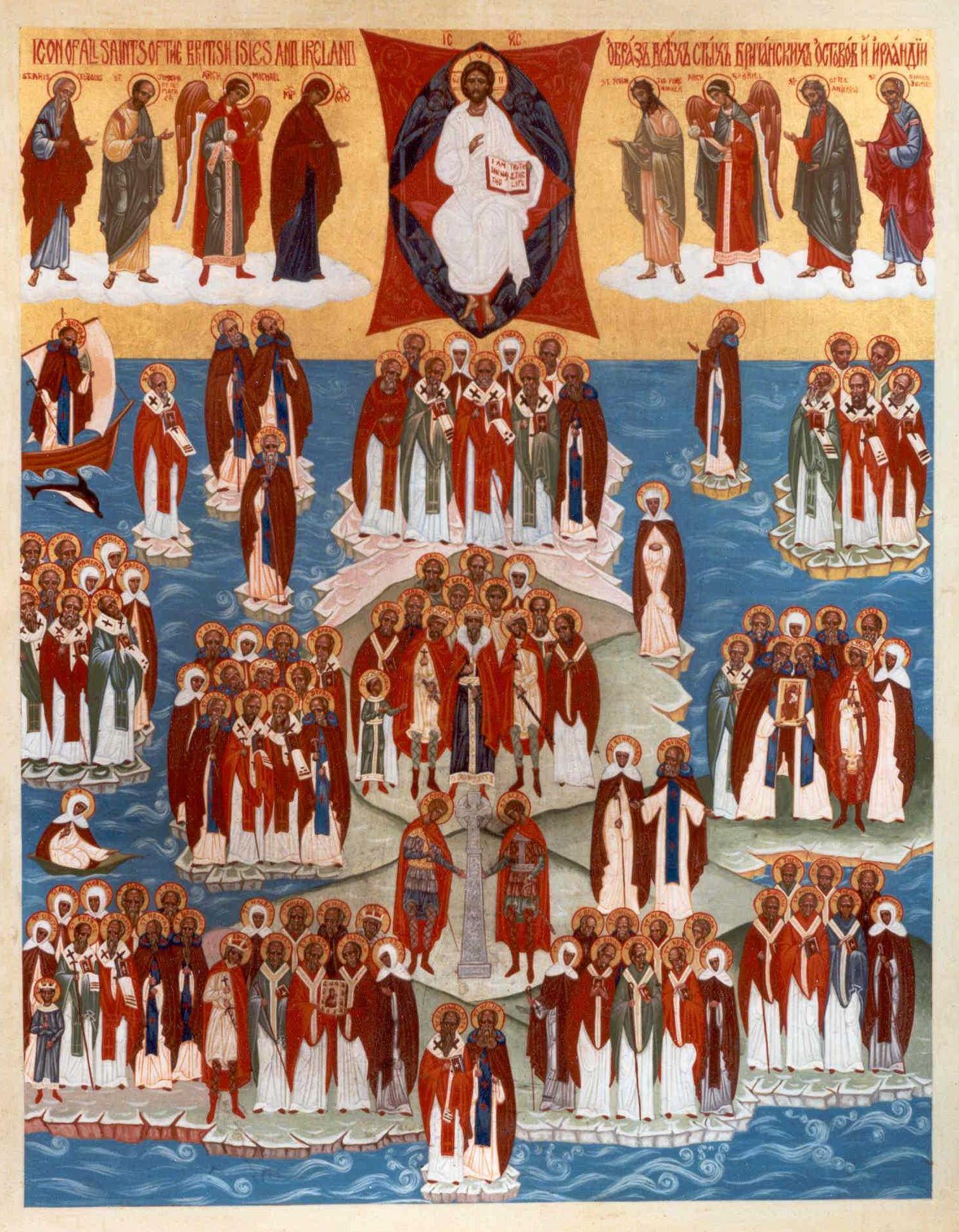
A picture depicting the numerous black and brown saints who used to own and rule the British Isles. The period covered by the personalities depicted in the picture, ranges from 50 AD to 1450 AD. After 1450 AD in England and the rest of the British Isles, the Muurish dominance became increasing precarious, and over the coming centuries was completely usurped, by the tribes of the pale skin ones living there today.
Then their presence and history was systematically erased. Sooner or later their memory faded away tosuch an extent that it sounded like insanity to speak about early black Britain.
But truth suppressed even for 2000 years still remains the truth. The early Muurs of Britain are telling their story. Through artefacts, bones, paintings, religious liturgy, genetics, anthropology, archeology, linguistics and a host of other disciplines, the truth is gradually spreading across the world.
The truth is, that for many thousands of years, Muurs, the so-called black people of today, owned and lived on the British Isles. Until the intrusion of the pale ones, who came in first as stragglers, co-habited as neighbours then eventually took over the land from the aboriginal Muurish Britons.
Note the images above, recall they are iconic images of the Churches of England and Ireland, note their ethnicity, note their colour, reflect on this, those images of Brown and Black Muurs that you see therein are truly representative of the earliest British people.
Black man, who are you?
Think!


Thank you Don Jaide… May God bless all of those contributing to the realization of this website.
I mean, the photo is cool and all but they don’t really resemble Moors, but a sort of mixed race not dissimilar from north african arabs.
The earliest records from the Orthodox Church places Joseph of Arimathea in England after the Resurrection of Christ, and St. Ninian about 497. Early maps did show the British isles closer to Africa than Italy and Spain. Genetic history doesn’t show a heavy African link in Scotland and Ireland where I am from (DNA is awesome). There was traffic from Byzantium in the Middle East (Turkey, Egypt, Rome) to the then Orthodox monasteries such as Lindisfarne (before there was a split of Eastern and Western Christianity in 1054.
After almost 1000 years, an Orthodox Monastery has formed again in Scotland on the Isle of Mull.
What is worth note are the desert mothers and fathers of the early Church. These are honored Saints. Anthony, St. Moses, St. Mary of Egypt, St. Cyprian and a huge amount of Saints still venerated in the Eastern Orthodox, Coptic and Ethiopian Orthodox Churches.
Thanks for your comments Bonnie. Very educative.
Quite accurate, Bonnie! The site below has a detailed chart of the (pre-Schism) Orthodox Saints of the British Isles that you may find interesting…. There are links on some of the icons that lead to their biographies : http://www.oodegr.com/english/istorika/britain/British_saints.htm